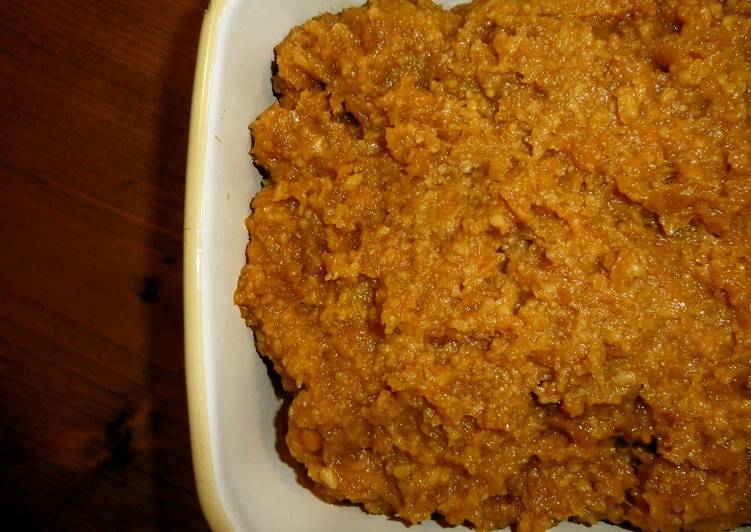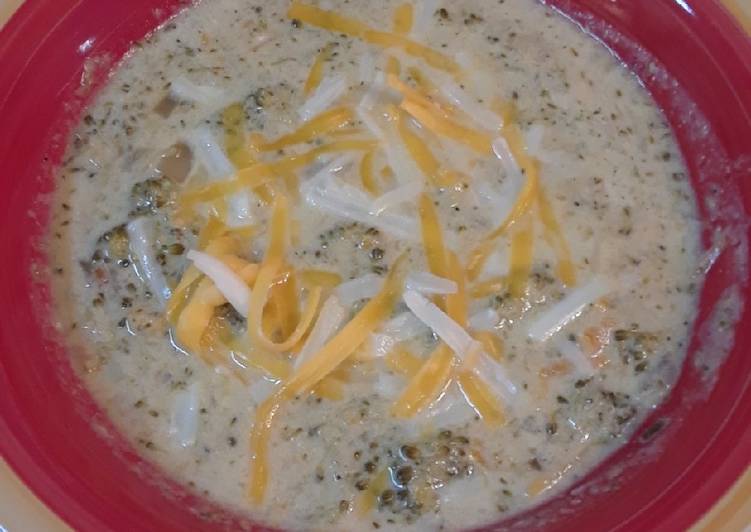Hey everyone, welcome to my recipe site, If you're looking for new recipes to try this weekend, look no further! We provide you only the best Homemade Miso Using a Pressure Cooker recipe here. We also have wide variety of recipes to try.

Before you jump to Homemade Miso Using a Pressure Cooker recipe, you may want to read this short interesting healthy tips about Green Living In The Kitchen Will Save You Cash.
It was certainly not that long ago that hippies and tree huggers were the only ones to show concern about the well-being of the environment. That’s a thing of the past now, with everyone being aware of the problems besetting the planet and also the shared burden we have for turning things around. The experts are agreed that we are unable to change things for the better without everyone’s active participation. Each and every family ought to start creating changes that are environmentally friendly and they should do this soon. Read on for some ways to go green and save energy, generally in the kitchen.
A lot of energy is definitely wasted when fridges and freezers, both heavy users of electricity anyway, are not running efficiently. You can save up to 60% on energy once you get a new one, in comparison to those from longer than ten years ago. Keeping the temperature of the fridge at 37F, coupled with 0F for the freezer, will probably save on electricity, while keeping food at the correct temperature. An additional way to save electricity is to keep the condenser clean, due to the fact that the motor won’t have to operate as often.
The kitchen by itself provides you with many small methods by which energy and money can be saved. Green living is something we can all perform, without difficulty. A lot of it really is simply utilizing common sense.
We hope you got benefit from reading it, now let’s go back to homemade miso using a pressure cooker recipe. To cook homemade miso using a pressure cooker you need 3 ingredients and 22 steps. Here is how you do that.
The ingredients needed to cook Homemade Miso Using a Pressure Cooker:
- Take 2 3/5 kg Fresh rice malt (nama koji)
- You need 1 3/5 kg Soy beans
- Prepare 800 grams Salt
Steps to make Homemade Miso Using a Pressure Cooker:
- Rinse the soy beans, and soak them in plenty of water overnight. They will swell up to twice their size by the next day.
- Put the soy beans into twice their volume of water in a pressure cooker and bring to a boil. Skim off the white scum that rises to the surface.
- Put the perforated metal plate that comes with the pressure cooker on top. Lock the lid on and cook under pressure for 10 minutes, then leave to cool down naturally. *If you have a small pressure cooker, cook the soy beans in 2 batches.
- This is the fresh rice koji I ordered by mail and used this time. There are 2 bags containing 1.3 kg each. You can use dried rice koji instead!
- While the soy beans are cooking, mix the koji and salt together.
- Drain the cooking liquid from the cooked soy beans, and hold onto it to use later. *If you're cooking the soy beans in several batches, just keep the cooking liquid from the final batch.
- Let the soy beans cool a bit, and put them in a plastic bag. They'll be hot so wrap the bag in a towel and press down with your hands to mash them. The beans are very soft so this should be easy.
- Add the combined koji and salt from Step 5 to the mashed soy beans and mix well. Mix in some of the cooking liquid until the paste is about the consistency of hamburger mixture or about as soft as your earlobe.
- Line a large container or tub with a double layer of plastic bags. Roll the paste into apple sized balls (these are called miso balls) and throw them hard into the container. Press them in firmly to eliminate any air pockets.
- When all the miso balls have been put into the container, press down hard on the whole mass again while putting your weight into it to remove any air. Sprinkle a handful of salt on top evenly. (This is to prevent the surface from developing mold.)
- Squeeze the inner plastic bag closed while pushing out any air inside. Press a small lid or plate on top, add a weight on top of that and wrap and close the outer plastic bag over all. Cover with a lid.
- Wrap the whole container with another plastic bag. Leave it in a dark, cool place out of the sun.
- Here's the schedule from this point on:
- Mixing up from the bottom (1st time): Check on the miso after about 2 months to see if it has developed any mold! If it has, just remove the parts with the mold. Mix the whole thing up from the bottom after removing the moldy parts.
- Mixing up from the bottom (2nd time): Open up the miso 4 months after the first time you mixed it up! Mix it up from the bottom again.
- If the miso has matured enough when you mix it up the 2nd time you can start eating it, but it will become more delicious if you let it mature for a while longer.
- I made miso this time on February 3rd, the day of spring (Setsubun no Hi). I'm looking forward to how it will turn out.
- April 30th: The first mixing up! It's about 3 months after I made the miso. I opened the lid slowly since I was afraid it had developed mold.
- Looks so good! It's fluffy, and actually starting to smell like miso! It hadn't molded at all as I'd feared, and it's turned into miso. It's not yet edible at this point, though.
- I mixed it up from the bottom. To do this I took the plastic bag out and squeezed the miso over the bag. This way my hands are not in direct contact with the miso, so no bacteria gets into it.
- I returned the plastic bag to the container, and levelled out the surface with a wooden spatula. I closed up the plastic bags again as described above. I left it in a cool, dark place. I'll check on it again in September…maybe it will be ready to eat by then…
- End of August: It's matured into a delicious looking miso. It's ready to eat at this point. The top photo is of the miso at this stage.
If you find this Homemade Miso Using a Pressure Cooker recipe helpful please share it to your close friends or family, thank you and good luck.


